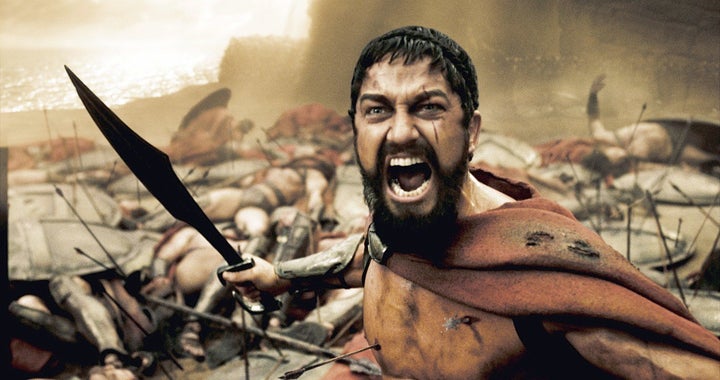Is Brand Building Replacing Religion? Part 2
Read about the four cornerstones of existence in Part 1,

Honor and Sacrifice
Honor is the fifth cornerstone that competitive team brands are utilizing. According to etymonline.com, Honor comes from the old Latin honorem meaning paying respect to; act or gesture displaying reverence or esteem. Later, it morphed into the French word honour meaning dignity, distinction, position, victory, triumph, etc. This word is related to actions and character. When speaking about physical aggression, competitive team sports use the same words connected to honor. Because a sacrifice demands something of worth, the very act revealed the character of the person. When placed in competitive spaces, honor can be summoned to win or to maim. But it can also be used to kills as recorded during Nero’s reigns in the gladiator games.
But when one studies historical events and religious texts, it is easily to recognize that honor and sacrifice are related.
Sacrifice is a practice that can be traced back through almost every ancient religion. Appeasing God or the gods, atoning for sin/wrongdoing and/or marking a location was its goal. Animals were used as the sacrifice (although some cultures practiced human sacrifice). Since many ancient people made a living using animals, sacrificing their choice livestock was a big deal.
Ancient Spartans and the Maasai in Kenya are the epitome of warrior cultures. Honor and sacrifice go together whether it is sacrificing one’s body or someone else’s for war or for sport.

Sports and Religion
Sports in ancient Greece were connected to religious events that were celebrated regularly. Festivals celebrated the patron god and victories were gained to acknowledge them. Because of this, it wasn’t unusual for myths to develop around athletes. For example, Polydamas of Skotoussa was a successful Olympic fighter from Greece. Stories linked him to Zeus and Hercules. Demonstrations of courage, competitiveness and perseverance were seen as virtues that only the gods could bestow. Although many of the sports in ancient Greece were individual, honor and sacrifice for the gods were tied to the athlete’s performance. Athletes are memorialized in statues and pottery.
In modern western world, technology and our values (religious and secular) have made humans more civilized. But the quest for honor and sacrifice is still there. Every physically aggressive sport has its pantheon of great players and teams. We treat them like commodities buying jerseys, hats, blankets, etc. But it is the competitive sports with an emphasis on teamwork that mostly transmit our modern values through the events and their merchandise.
Ok, so what does this have to do with brand building?!!
Enough backstory. Professional competitive team sports in the U.S. have built up considerable brand equity over the years. Today, the NBA is global and even the SuperBowl is watched by fans in other countries. They are interwoven into the fabric of American culture and have increased their influence. I believe they are filling the void left by declining religious and civic values. Here are 4 marketing tenets that are utilized:
- Controlled adoration: We are inundated with images of players, stories and stats through TV, print and the internet. These provide a benchmark for young players to emulate, personalities to imitate and content to consume. Since basketball and football are still mass marketed events, they need well-designed print, digital and wearable content for promotion. Fans are loyal to logos and colors which is form of tribalism. Sporting events enough spectacle during a game to allow fans to express themselves. A full sensory overload experience is provided encompassing the four learning styles: visual, auditory, tactile and kinesthetic.
- Family values: Every major competitive team sport wants to attract families. So, they add ‘family friendly’ concepts into the game: free prizes, recognition, etc.Constant viewing encourages identification. The response are families outfitting themselves in team merchandise and fans imitating theatrical victory dances (Cam Newton).
- Responsible behavior: Although alcohol is still sold at games, arenas have done a good job tethering the right kind of desires and emotions to the game. Most of what is celebrated in commercials broadcast during a game has nothing to do with aggression and violence. Its more about fun, celebration and community. Niche marketing sometimes takes a different approach. (Conflicts happen during tailgating but this is outside of the arena’s control).
- Results: Competitive team sports promote complementarianism (players have different but complementary roles to play) even though our society favors egalitarianism (the principle that all people are equal and deserve equal rights and opportunities) in everyday life. The former is primarily a religious concept that works for competitive team sports because the games are built on victory (honor) and authority, not consensus (safety). The results-oriented drive of every team allows viewers to live vicariously through individual players and follow the games throughout the season.
As the fifth one, honor influences the other four cornerstones. Religion continues to inspire honor but consistent negative media reports has made Americans suspicious of organized expressions of religion. Americans are open to public expressions related to team sports but seem to prefer private expressions when it comes to organized religion even though they are closely related. This can be seen in the public display of team jerseys worn in some churches before a game without the blink of an eye. But you will hardly see a sanctioned public display of organized religion at a professional game. This dovetails very well with the Millennial Generation’s feelings about religion, political institutions and the rise of social media. Check out another one of my commentaries: The Problem with Branding Everything.
Who is going to fill the void that these religions, corporations and institutions, who are in the midst of transition, left? — Sasha Strauss, Managing Director, Innovation Protocol + Graduate Professor at UCLA, USC, & UCI. View his ‘Branding is the New Normal’ video.